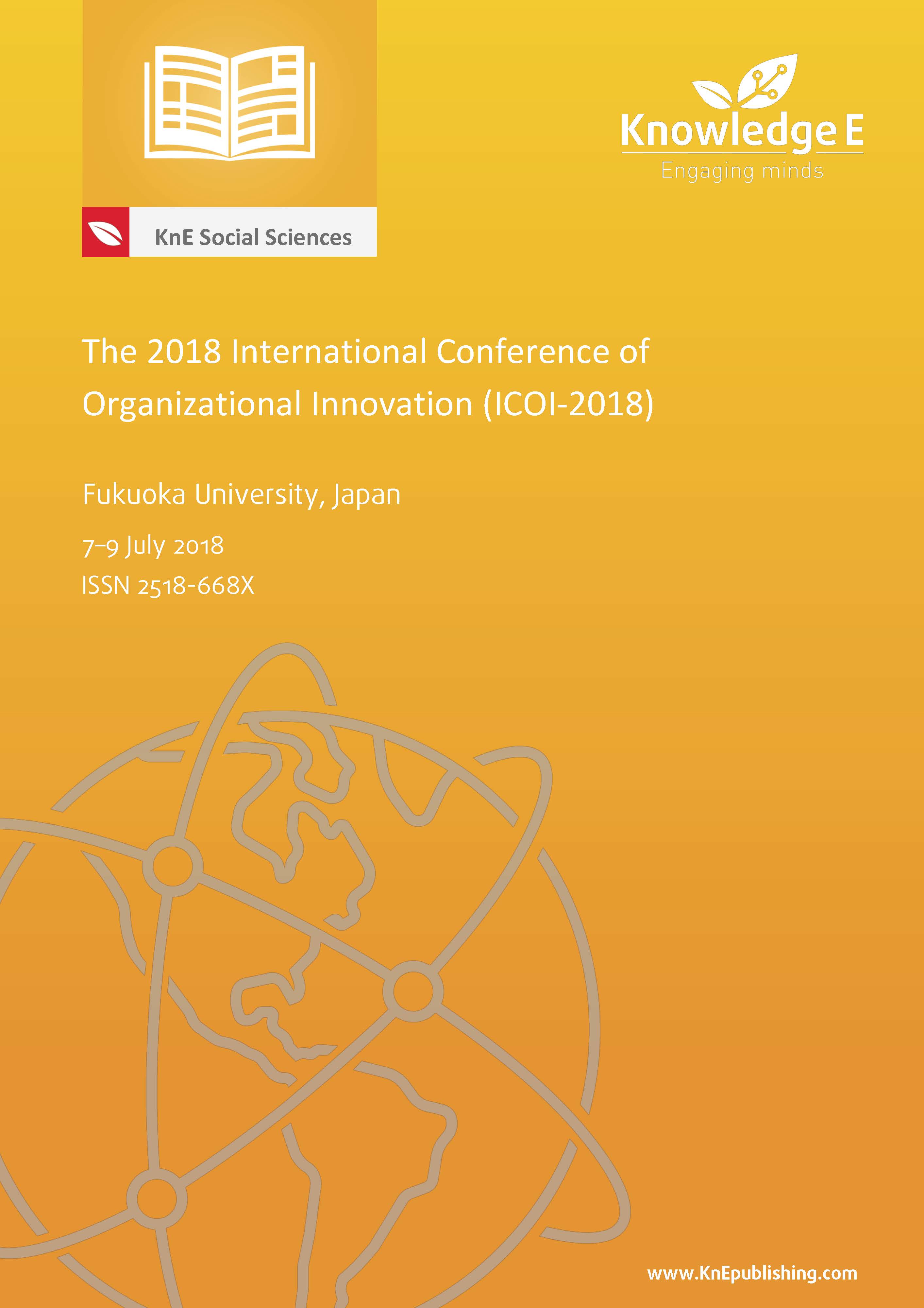Understanding Skill Mismatch from Learning Organization Perspective: A Literature Review
DOI:
https://doi.org/10.18502/kss.v3i10.3429Abstract
Various studies say that skills mismatch is one of the causes of weak competitiveness of a country. Although skills mismatch has been widely described in various macroeconomic kinds of literature but has not been explained in human resource management literature. This article attempts to explain the skill of mismatch in the perspective of learning organization literature to bring the better explanation on how an organization is handling such a mismatch. With this objective, this article provides a bridge analysis in understanding macro skills mismatch to the management of human resources at the organization level. As a literature review, this article is derived from the search of scientific journals through EBSCO and Google Scholar with the publication period of the year 2000–2017. The conclusion of this article is to support organizational learning theory that can enhance the competitiveness of the organization. The competitiveness created through the learning organization will be an effort in dealing with the skills mismatch.
Keywords: skills mismatch, learning organization, competitiveness
References
Artes, J., Salinas-Jimenez, M., and Salinas-Jimenez, J. (2014). Small fish in a big pond or big fish in a small pond? The effects of educational mismatch on subjective wellbeing. Social Indicator Research, vol. 119, no. 2.
Abraham, K. (2015). Is skill mismatch impeding U.S. economic recovery? Retrieved from ilr.sagepub.com
Allen, J. and DeWeert, E. (March 2007). What do educational mismatches tell us about skill mismatches? A cross country analysis. European Journal of Education, vol. 42.
Badillo-Amador, L. and Vila, L. E. (2013). Education and skill mismatches: Wage and job satisfaction consequences. International Journal of Manpower.
Bender, K. A. and Heywood, J. S. ( July 2011). Educational mismatch and the careers of scientists. Education Economics, vol. 19, no. 3, pp. 253–274.
Cappelli, P. (March 2008). Talent management for the twenty-first century. Harvard Business Review.
Cappelli, P. (2009). A supply chain model for talent management. Perspectives-Point, People and Strategy, vol. 32, no. 3.
Cedefop. (2010). The Skill Matching Challenge-Analysing Skill Mismatch From Policy Implication. European Centre for the Development of Vocational Training. Luxembourg: Publications Office of the European Union.
Chowdhury, S. R. (2014). Skill mismatches in Indian labor market: Policy priorities & challenges ahead. Indian Journal of Industrial Relations, vol 49, no. 3.
Dobbs, R. and Madgavkar, A. ( June 24, 2014). The world at work: Matching skills and jobs in Asia. UNESCO IBE.
Domadenik, P., Farčnik, D., and Pastore, F. ( July 2013). Horizontal Mismatch in the Labour Market of Graduates: The Role of Signalling. Discussion Paper No. 7527, the Institute for the Study of Labor. IZA.
Florentine and Prabowo, S. (2014). Hubungan antara Skill Mismatch dengan stres kerja pada karyawan PT X. Psikodimensia, vol. 13, no. 2. Fakultas Psikologi Universitas Katolik Soegijapranata Semarang.
Holzer, H. J. (November 2013). Skill mismatches in contemporary labor markets: How real? And what remedies? Georgetown University and American Institues of Research.
International Labor Organization. (2013). Skills mismatch in Europe. Statistics Brief, Geneva 2014. Retrieved from http://www.cedefop.europe.eu/EN/Files/9023_en. pdf (accessed Aigust 1, 2015).
Jonbekova, D. (2015). University graduates’ skills mismatches in Central Asia: Employers’ perspectives from post-soviet Tajikistan. University of Cambridge, European Education.
Kasarda, J. D. (1990). The Jobs – Skills Mismatch. NPQ: New Perspectives Quarterly, vol. 7.
Mahy, B., Rycx, F., and Vermylen, G. (2015). Educational Mismatch and Firm Productivity: Do Skills, Technology and Uncertainty Matter? IZA Dissucion Paper No. 8885.
Marquardt, M. J. (1996). Building the Learning Organization: A System Approach to Quantum Improvement. Mc-Graw-Hill.
Senge, P. M. (1990). The Fifth Discipline – The Art and Practise of Learning Organization. New York, NY: Double D/Currency.
Senge, P. M. (2000). Schools that Learn: A Fifth Discipline Fieldbook for Educators, Parents and Everyone Who Cares About Education. New York, NY: Doubleday – A Division of Random House.
Simon, B. (1999). Why no pedagogy in England? in J. Leach and B. Moon (eds.) Learners and Pedagogy. London: SAGE Publications.
Smith, D. (2012). How employers can help close the skills gap. Harvard Bussiness Review. Retrieved from https://hbr.org/2012/02/how-employers-can-help solvet&cm_sp=Article-_-Links-_-End%20of%20Page%20Recirculation (accessed on April 15, 2017).
Wang, P. Y. (2006). Human Resource Management plays a new role in learning organizations. The Journal of Human Resource and Adult Learning.

